Cats have long been the subject of tall tales (nine lives, really?) and superstitions. How many of these cat myths did you believe were true?

14 Common Cat Myths You Probably Believed Were True—Until Now


Myth 1: Cats are nocturnal
Nope, cats are not nocturnal. Surprised? “We probably think [they are] because we are most aware of our cats when they are running over our faces at 3 o’clock in the morning. Cats are actually crepuscular, which means they are most awake at dusk and dawn,” says Jackson Galaxy, a renowned cat behavior and wellness expert, the host of Animal Planet’s My Cat From Hell and a New York Times bestselling author. “This is because in nature, their natural prey is awake at dusk and dawn.”
Over time, you can adjust your cat to your sleeping schedule. You should feed them around the same time every day so that they get into a rhythm. Consistency is key, so resist the urge to leave food out all the time, which is a common cat mistake owners make.
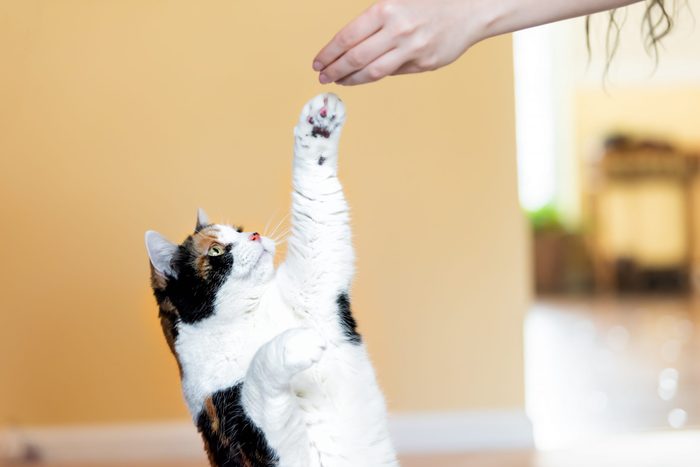
Myth 2: Cats are not trainable
“Cats are just as trainable as dogs!” says Russell Hartstein, a certified dog and cat behaviorist and trainer. “Most people do not train their cats because they don’t know how or have heard the myth that cats don’t listen or learn.”
But Hartstein says nothing could be further from the truth. “Cats love training and learning just like dogs,” he says.

Myth 3: Cats are low-maintenance pets
This one’s false, too. Cats are not low-maintenance pets. “Cats that are housed exclusively indoors need a lot of enrichment in order to stay happy and healthy,” says feline veterinarian Lynn Bahr, DVM. Sunny windows, interactive cat toys, quality food and clean litter boxes will keep your cat happy.

Myth 4: Cats like to be alone and aren’t loving like dogs
Another cat myth? Cats aren’t affectionate. “In comparing their behavior to that of dogs, we end up calling cats things like ‘aloof,’ ‘overly independent,’ even ‘unloving,’” Galaxy says. “It’s not fair that because of who they are (and who they aren’t), we judge cats simply because they are not programmed to make us humans happy as their primary objective.”
Try to see it from a cat’s perspective. “When seen through no other lens than their own, we can see that most cats thrive in communities and in relationships with humans and other animals, and absolutely can and do show love,” Galaxy says. “It just looks different than the love that we perceive dogs give to us.”

Myth 5: Milk is a great treat for cats
Just like some humans, cats can be lactose intolerant. Even though cats are often associated with milk, you should never give your cat milk. “All mammals are born with the ability to digest their mother’s milk because their bodies contain the enzyme lactase, which breaks down the lactose protein,” says Dawn LaFontaine, a cat shelter volunteer, cat blogger and founder of Cat in the Box eco-friendly cat condos and toys. “Once a kitten is weaned, however, her gut stops producing this enzyme.” Feeding your cat milk can cause an upset stomach, vomiting and diarrhea.
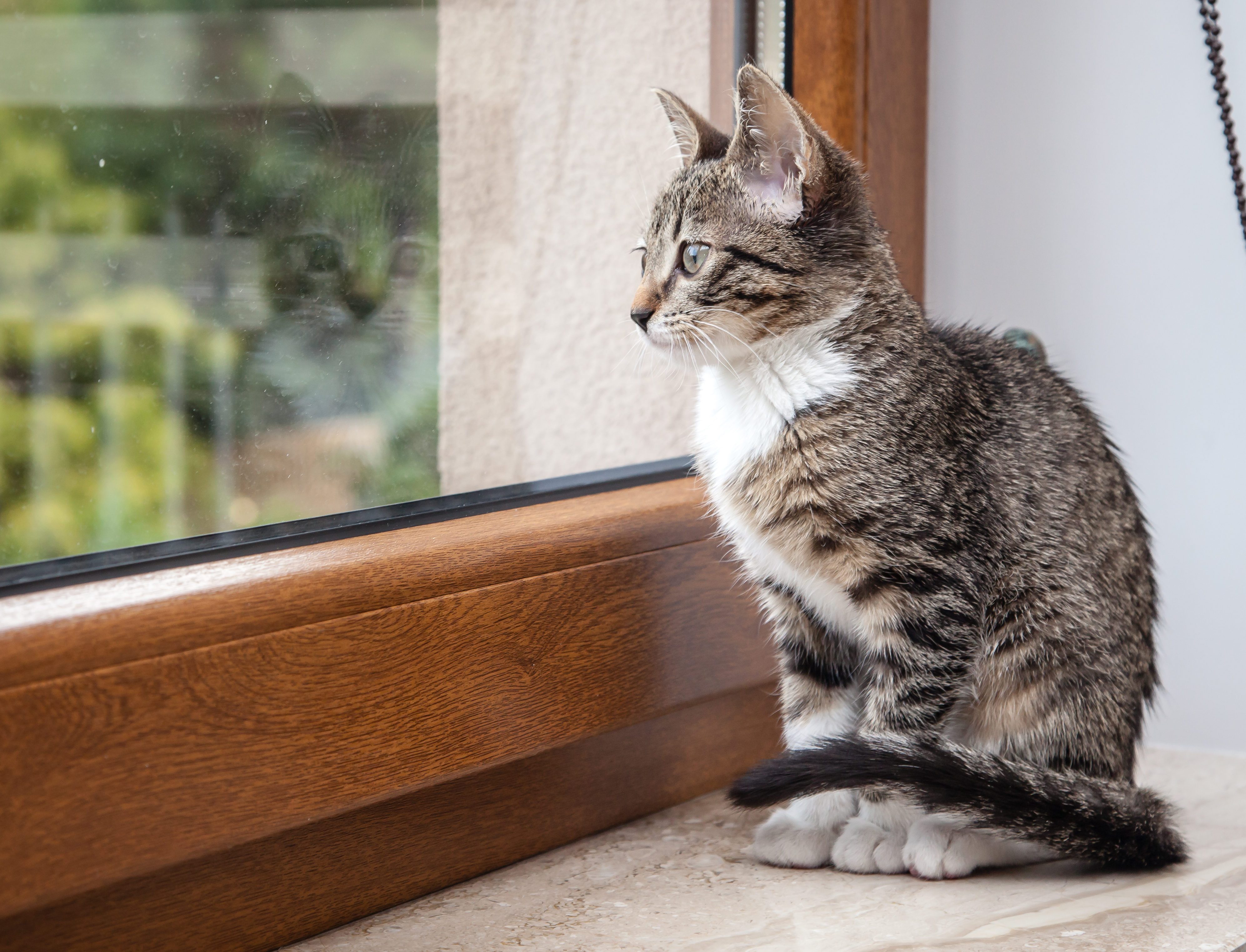
Myth 6: It’s OK to leave cats home alone for a long weekend
Many people misjudge cats as loners and think that if you set them up with an automatic feeder and enough water that you can leave them home alone for a few days. But Galaxy, who is an expert in understanding cat behavior, says cats can get separation anxiety just like dogs. They crave attention and love having their family around, even though they may not show it in the most obvious way.

Myth 7: A purring cat equals a happy cat
Another cat myth busted! If your cat is curled up next to you, purring while you scratch their head, it’s typically a sign that they are very content. But a cat purr can mean a lot more than just happiness. “Cats purr when they are frightened and when they’re threatened,” says LaFontaine. “They purr in pain, when they’re injured, in labor and even when they are near death.”
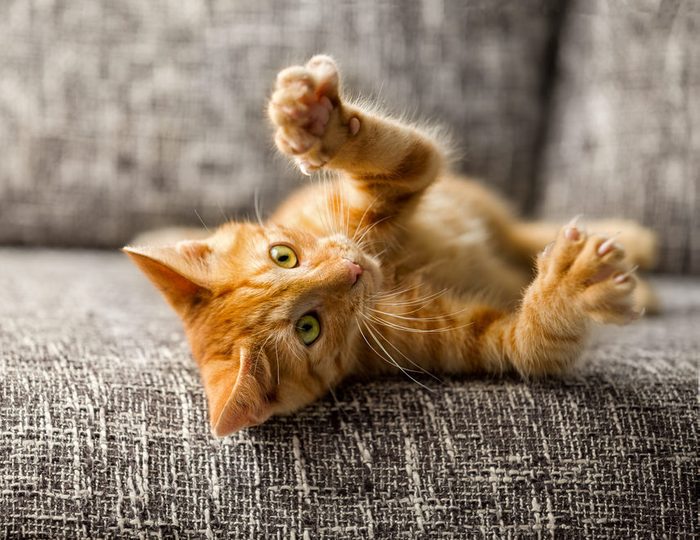
Myth 8: Declawing is not harmful
“Declawing is a completely unnecessary surgery,” Galaxy says. “The idea of saving your furniture by destroying your cat’s body is just unacceptable.” It can physically hurt your cat’s body and take away a part of them. There are far more effective—and humane—ways to keep your cat from scratching the furniture than resorting to the cruel practice of declawing, he says. Encourage your pet to use a cat scratching post, for instance.
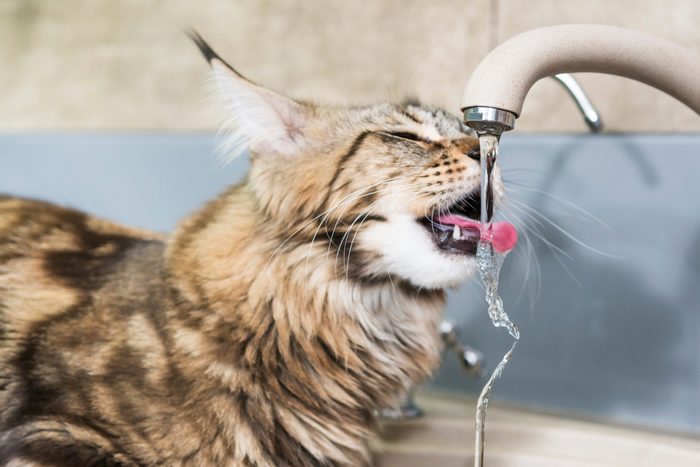
Myth 9: Cats hate water
It’s true that cats hate getting baths, but they don’t hate water. “Cats are less ‘waterproof’ than dogs, thanks to their constant grooming, which keeps their fur oil-free and fluffy, so they do tend to soak through and get cold more easily if they get wet,” says LaFontaine. “But many cats and kittens are fascinated by water and love splashing and playing in a running faucet or dipping their paws in a full tub.” Two cat breeds that love water (and will voluntarily hop in the bath) are the Turkish Van and the Bengal.

Myth 10: Indoor cats live longer
“This is only true if you are comparing indoor cats with homeless outdoor kitties,” says Dr. Bahr. “Otherwise, cats that are owned and have access to the outdoors live just as long as indoor cats do.” If your cat spends time indoors and outdoors, make sure their environment is safe and free of these plants that can be poisonous to cats.

Myth 11: Cats and dogs can’t get along
One of the big myths about caring for cats is that they can’t live with dogs. Sure, sometimes cats and dogs don’t get along, but it’s the same as two humans not getting along. It’s all about knowing how to communicate with one another, says Galaxy. Cats and dogs can easily get along as long as we help them communicate and co-exist safely—which starts with understanding your cat’s behavior and body language.

Myth 12: Cats always land on their feet
The misconception that cats always land on their feet “may be thanks to a cat’s ‘righting reflex,’ an internal balancing system, combined with very flexible backbones, which allows him to twist his body the right way midfall,” says LaFontaine. “Cats also have a vestibular apparatus in their inner ears which enables them to discern up from down.”
However, these systems are not foolproof, and during a short fall, a cat may not have enough time to react, resulting in a clumsy fall. And even cats that do land on their feet are not immune to injury.
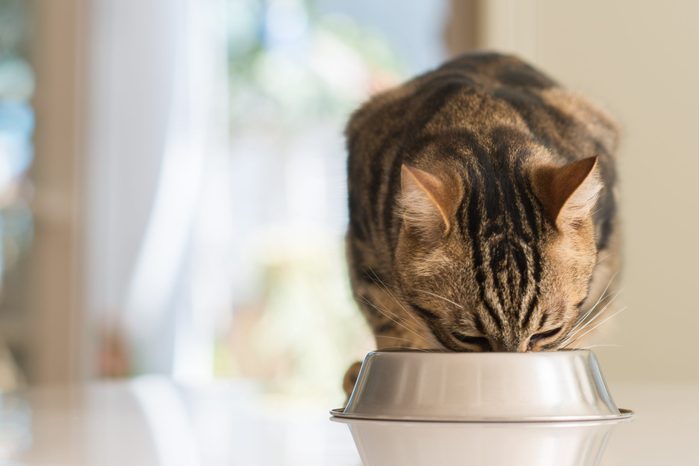
Myth 13: Dry food is better than wet food
When it comes to cats, the opposite is actually true. “Canned food is better than dry because it is higher in protein, lower in calories and contains needed moisture,” says Dr. Bahr. Most veterinarians recommend wet food for cats, which mimics cats’ natural eating habits and provides numerous nutritional benefits. Proper nutrition makes all the difference—that includes steering clear of dog food, which cats aren’t built to digest.
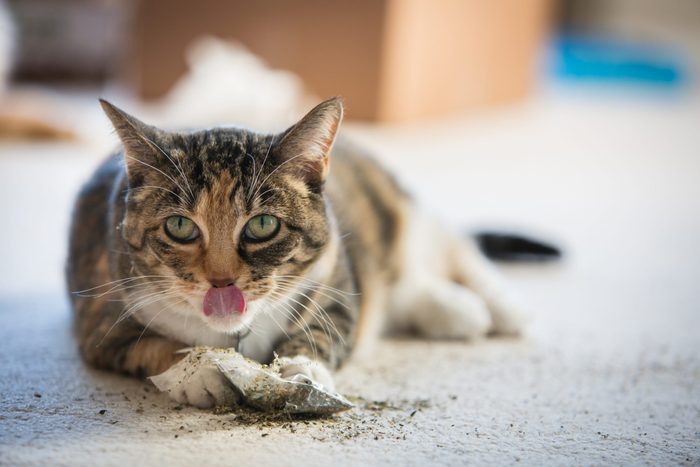
Myth 14: All cats love catnip
“Actually, only about 50% to 75% of cats are susceptible to catnip’s charms,” LaFontaine says. Sensitivity to the essential oil in catnip, called nepetalactone, is actually an inherited trait, and not all cats are susceptible. “And while most cats who respond to catnip seem to enjoy a kind of euphoric high from the plant, catnip can actually make some cats aggressive,” she notes.
About the experts
|
Why trust us
At Reader’s Digest, we’re committed to producing high-quality content by writers with expertise and experience in their field in consultation with relevant, qualified experts. We rely on reputable primary sources, including government and professional organizations and academic institutions as well as our writers’ personal experiences where appropriate. We verify all facts and data, back them with credible sourcing and revisit them over time to ensure they remain accurate and up to date. Read more about our team, our contributors and our editorial policies.
Sources:
- Cornell Feline Health Center: “Feeding Your Cat”
- Humane World for Animals: “Why declawing is bad for your cat”
- Jackson Galaxy, cat behaviorist, author and host of My Cat From Hell; interviewed, 2021
- Lynn Bahr, DVM, feline veterinarian and founder of Dezi & Roo; interviewed, 2021
- Russell Hartstein, certified cat behaviorist; interviewed, 2021
- Dawn LaFontaine, founder of Cat in the Box eco-friendly cat toys; interviewed, 2021




















